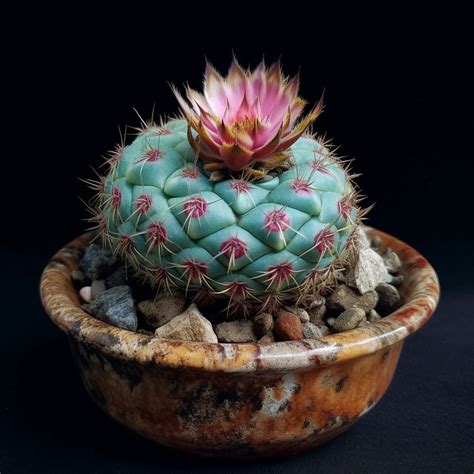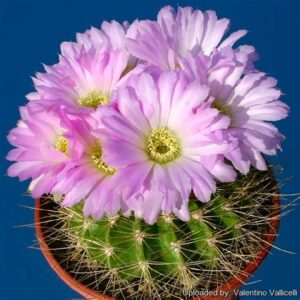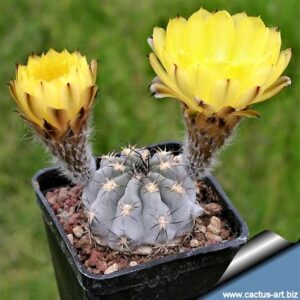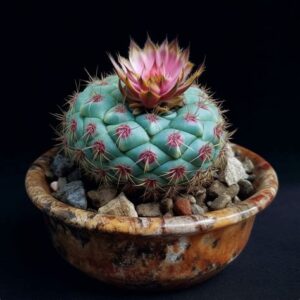Acanthocalycium variifolium, commonly known as the variable globe cactus, is a remarkable species within the diverse family of cacti. Originating from the arid landscapes of Argentina, this plant possesses an intriguing mixture of aesthetic appeal and resilience. With proper care and optimal growing conditions, Acanthocalycium variifolium can thrive, adding unique beauty to any succulent collection. This article will delve into the care requirements and environmental needs of this captivating cactus, providing a comprehensive guide for both novice and seasoned horticulturists.
Understanding the Acanthocalycium variifolium is crucial for creating a suitable habitat for its growth. This species typically exhibits a spherical shape, adorned with spines and magnificent blooms, ranging from yellow to red. Characterized by its ribbed exterior and vibrant coloration, it is no wonder that this cactus species finds its way into showcases and private collections alike. Now, let’s explore the indispensable aspects of cultivating this striking plant.
Soil Requirements: The Foundation of Thriving
One of the cornerstones of nurturing a healthy Acanthocalycium variifolium is selecting the appropriate soil mixture. This cactus demands well-draining substrate to prevent root rot and other moisture-related issues. A combination of potting soil, sand, and perlite or pumice creates an ideal blend. The porosity of the mixture allows water to flow freely, while still providing essential nutrients.
Consider using commercial cactus or succulent potting mixes available at garden centers. Alternatively, creating a custom mix can yield excellent results. The proportions should ideally favor drainage solutions; a mixture comprising 50% potting soil, 25% sand, and 25% perlite can suffice. However, it is vital to monitor the soil’s moisture retention, as the variable globe cactus prefers a drier environment compared to other houseplants.
Pot Selection: Optimal Vessel for Growth
Choosing the right pot can also significantly influence the well-being of Acanthocalycium variifolium. Selecting a container with drainage holes is non-negotiable, as this allows for excess water to escape, safeguarding the roots from stagnation. Terracotta pots are a favorable option since they are porous, helping to regulate moisture levels effectively.
Another aspect to consider is the size of the pot. Acanthocalycium variifolium thrives best in moderately sized pots that are not excessively large. This restriction can help limit water accumulation while also creating a cozy space that encourages the plant to establish itself more firmly. Transplanting the cactus into a larger pot should only be done when it has outgrown its current home—typically every two to three years.
Light Considerations: Setting the Stage for Sunlight
Sunlight is essential for the health and vigor of Acanthocalycium variifolium. This cactus flourishes under bright, indirect light, ideally receiving at least six hours of sunlight each day. Such exposure not only encourages robust growth but also enhances the beauty of its blooms. Place the cactus near a sunny window, ideally facing south or west, but take care to shield it from intense, direct midday sun, which can lead to scorching and sunburn.
If you notice the cactus stretching or becoming leggy, it might be an indication that it requires more light. Conversely, if the coloration appears dull or washed out, consider relocating it to a subtler light environment. Indoor growers may also benefit from artificial grow lights, especially during the winter months when daylight is limited.
Watering Guidelines: Striking the Right Balance
Watering is perhaps one of the most critical aspects of cactus care. Acanthocalycium variifolium prefers a distinct watering schedule: infrequent but thorough watering. During the growing season, which typically spans from spring to early autumn, allow the soil to dry out completely before drenching it. This method stimulates the roots to grow deeply in search of moisture.
In the winter months, as the cactus enters its dormant phase, significantly reduce watering frequency. It is crucial to maintain a drier environment, as excess moisture during this time can cause severe damage. As a general rule, check the soil every two weeks, and water only if the top one to two inches are completely dry.
Fertilization: Nourishing Nutrients for Growth
While Acanthocalycium variifolium can draw sustenance from its soil, periodic fertilization provides an extra boost to enhance growth. During the growing season, using a diluted, balanced cactus fertilizer can promote flowering and increase overall vitality. Opt for a fertilizer that contains potassium, phosphorus, and nitrogen, keeping to a quarterly schedule.
It is essential to avoid over-fertilization, as this can stress the plant and lead to unhealthy growth. Diluting the fertilizer to half-strength is typically recommended. Always water the cactus before applying any fertilizer to prevent root burn and ensure that nutrients are absorbed effectively.
Pest Management: Safeguarding Against Intruders
As with many houseplants, Acanthocalycium variifolium can fall victim to pests such as mealybugs, spider mites, and scale insects. Regular monitoring is pivotal for early detection of these unwanted visitors. Signs of infestation typically include webbing, tiny spots, or a sticky residue on the surface of the plant.
In the event of an infestation, treat the affected cactus with insecticidal soap or neem oil. Gently wipe the plant with a cotton swab dipped in alcohol to eliminate mealybugs. It is advisable to isolate the affected cactus until treatment is complete to prevent pests from spreading to other plants.
Temperature Preferences: Creating the Optimal Climate
Acanthocalycium variifolium flourishes in warm temperatures, thriving best in environments ranging from 70°F to 90°F (21°C to 32°C) during the growing season. However, this cactus is also capable of withstanding brief periods of cooler temperatures, down to around 50°F (10°C). It is imperative to protect it from frost, as freezing temperatures can cause irreparable damage.
During the dormant winter months, maintaining a cooler environment, particularly at night, encourages flowering in the following season. A temperature range of 50°F to 60°F (10°C to 15°C) is ideal for this purpose.
Conclusion: Cultivating a Vibrant Acanthocalycium Variifolium
With its unique appearance and manageable care requirements, Acanthocalycium variifolium presents an excellent opportunity for both casual and dedicated plant enthusiasts. By providing the right soil, optimal light, and proper watering techniques, you can cultivate a flourishing specimen that will thrive in your home. Monitoring for pests and adjusting care based on seasonal changes will further enhance the beauty of this exquisite cactus. As you nurture your variable globe cactus, you will be rewarded with not only a stunning ornamental piece but also a deeper appreciation for the fascinating world of cacti.





Leave a Comment